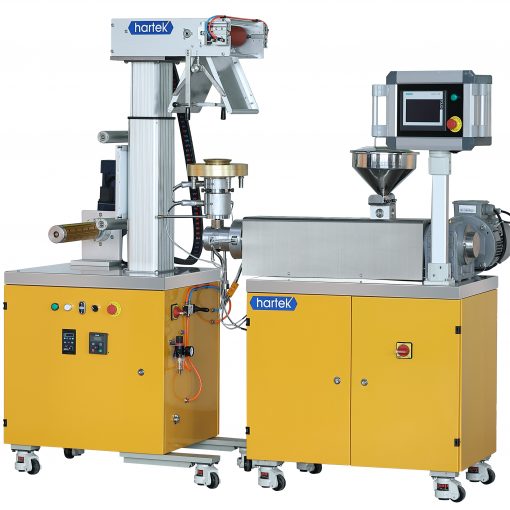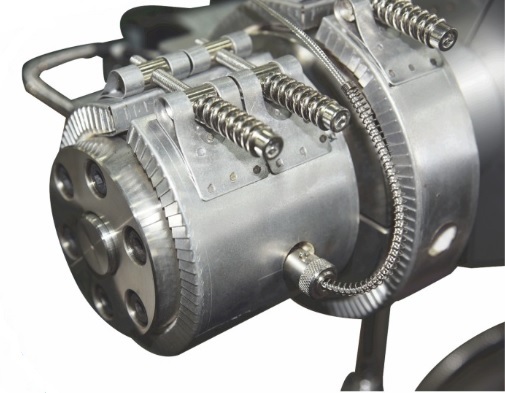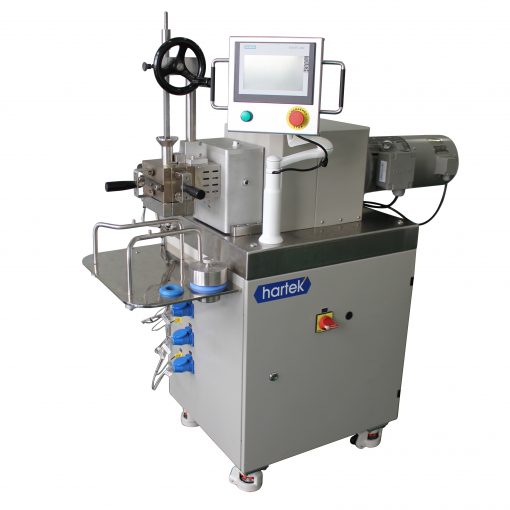How does a lab banbury mixer work?
When the small mixer is working, the two rotors rotate relative to each other. The material from the feeding port is clamped into the gap between the rollers and is squeezed and sheared by the rotor.
In a cycle of flow around the rotor, the material is sheared and rubbed everywhere, so that the temperature of the rubber rises sharply, the viscosity decreases, the wettability of the rubber on the surface of the formulation increases, and the rubber contacts the surface of the formulation fully. The mixture block is broken by shearing along with the rubber through the clearance between the rotor and the rotor, the clearance between the rotor and the upper and lower top bolts, and the inner wall of the mixing chamber. It is surrounded by the tensile deformation rubber and stabilized in the broken state. At the same time, the convex edges on the rotor make the rubber move along the axial direction of the rotor, and play the role of stirring and mixing, so that the mixture is evenly mixed in the rubber. The mixture is so repeatedly sheared and broken that the rubber compound is repeatedly deformed and restored. The rotor ribs are constantly stirred so that the mixture is evenly dispersed in the rubber compound and reaches a certain degree of dispersion.




